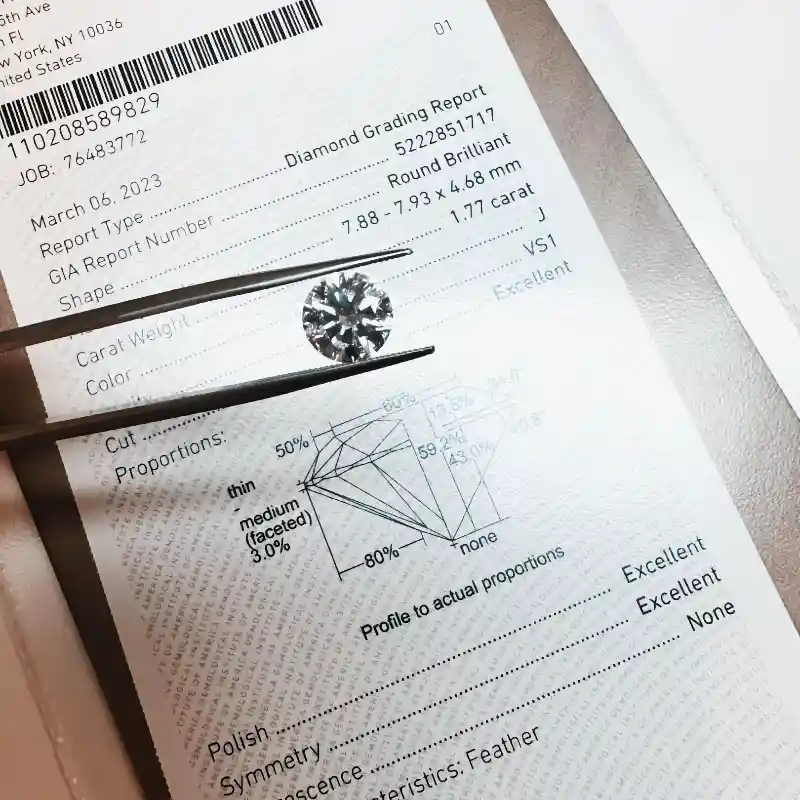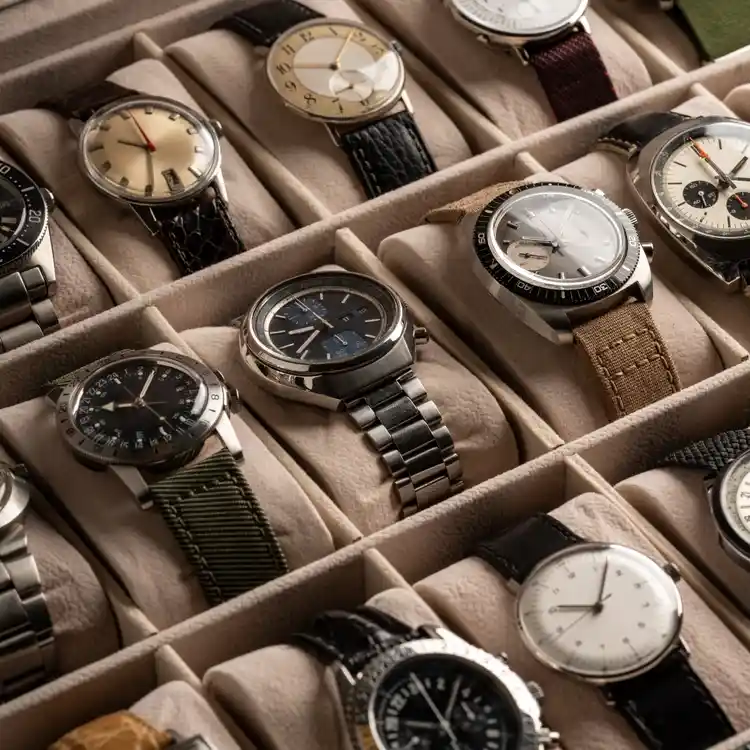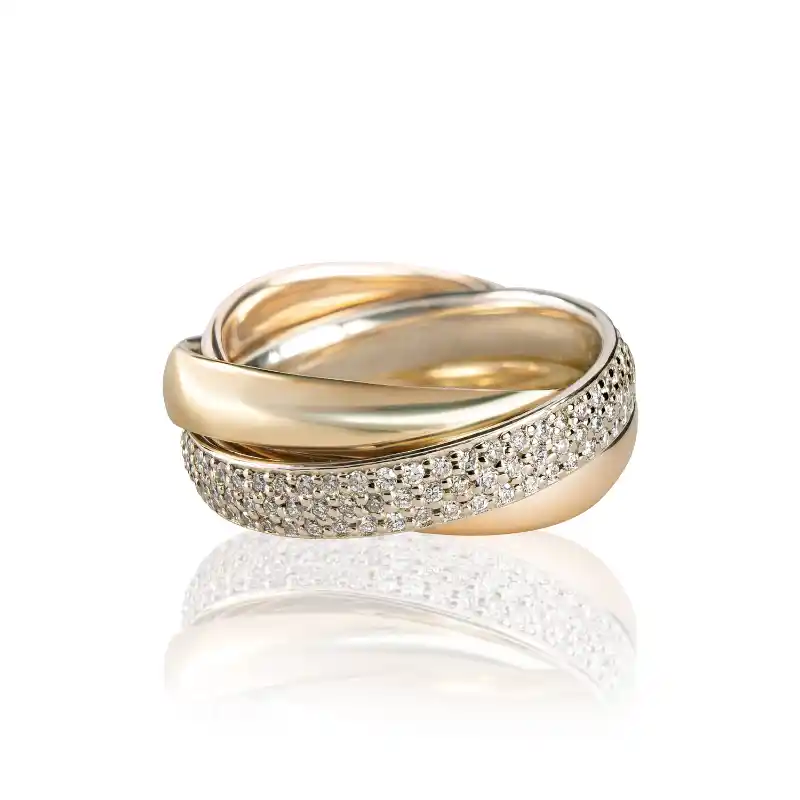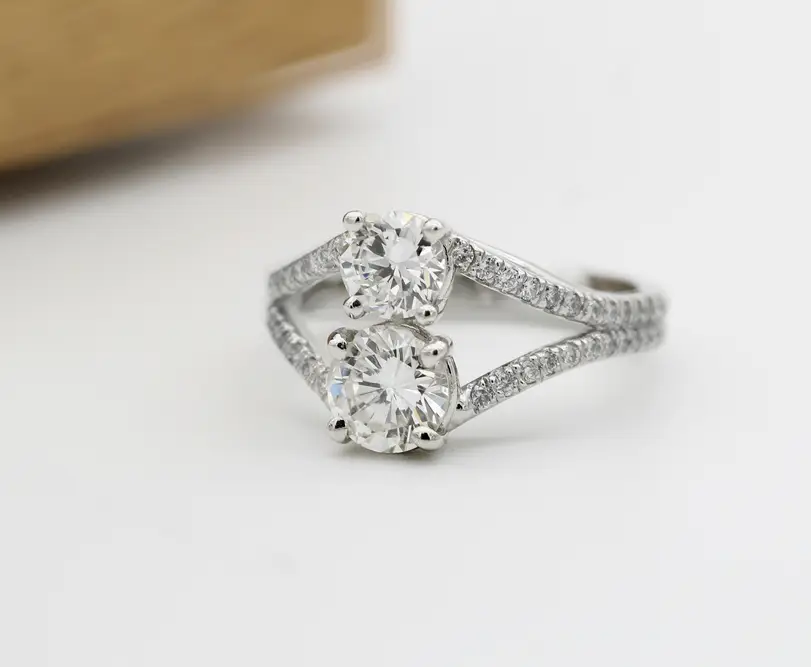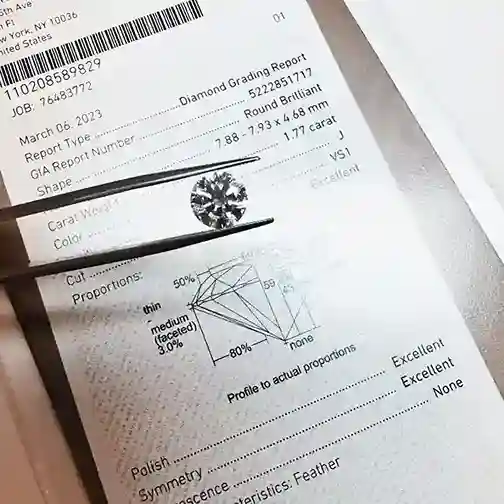
How to Sell a GIA Diamond Successfully: A Comprehensive Guide
Introduction: An In-Depth Look at Selling GIA Diamonds
Selling a diamond can be daunting, especially when trying to maximize its value. One of the most effective ways to enhance a diamond’s marketability is through certification by the Gemological Institute of America (GIA). Known for their rigorous standards and unparalleled reputation, GIA-certified diamonds symbolize quality, assurance, and trust in the jewelry market. This comprehensive guide aims to equip you with the knowledge and strategies needed to successfully sell your GIA diamond, from understanding the nuances of its certification to finding the right buyer. Whether you’re a seasoned seller or new to the process, this guide will help you navigate the complexities of selling a GIA diamond confidently and easily.
What Makes GIA Certification Special?
Certification might sound bureaucratic, but they are a gold standard in the diamond world. Here's why:
Authenticity:
A GIA certification verifies the diamond’s natural origin or confirms if it’s lab-grown, ensuring buyers know precisely what they are purchasing.
Quality Assurance:
The certification grades the diamond on globally recognized standards, accurately assessing its quality.
Trust:
A GIA certification builds confidence among buyers and sellers, establishing a trustworthy transaction.
Why GIA Over Other Certifications?
GIA is not the only organization that certifies diamonds, but it’s often considered the gold standard. Here’s why:
Reputation:
Established in 1931, GIA has a long-standing history and is highly respected in the gemological field.
Consistency:
GIA maintains uniform standards worldwide, ensuring that a GIA-certified diamond meets the same criteria regardless of where it is assessed.
Innovation:
As pioneers in research and education in gemology, GIA continually advances the science of diamond grading and gem identification.
Step-by-Step Guide to Selling GIA Diamonds: A Comprehensive Journey
Understanding Your GIA Diamond
Every diamond is different in some way. It's about understanding its properties and communicating them to potential buyers when you sell GIA diamonds.
Historical Background:
Determine if your diamond has any historical significance that could add to its value.
Uniqueness:
Identify what makes your diamond stand out, such as rare characteristics or exceptional quality.
Certification Details:
Familiarize yourself with the details in the GIA report to accurately convey the diamond’s qualities.
Assessing the 4 C's: The Pillars of Valuing GIA Diamonds
The 4 C’s—cut, color, clarity, and carat weight—are essential in determining a diamond’s value.
Cut:
The cut of a diamond affects its sparkle and how well it reflects light.
Color:
The color grade ranges from D (colorless) to Z (light yellow or brown), significantly influences a diamond’s value.
Clarity:
Inclusions and blemishes are like birthmarks, defining the diamond’s uniqueness and impacting its clarity grade.
Carat Weight:
The carat weight measures the diamond’s size, but the value is also influenced by its proportion and symmetry.
Finding the Right GIA Diamond Buyer: Matching Venue with Value
Finding the right buyer can take time, but matching the venue with the diamond’s value is crucial.
Online Buyers:
They offer global reach and competitive pricing and can handle transactions of any size.
Traditional Sales Routes (jewelers):
They provide a personal touch and establish trust.
Auction Houses:
These are ideal venues for rare and precious stones, often attracting high-end buyers.
Online vs. Traditional Selling: A Balanced View
Consider the benefits of online and traditional selling methods to determine the best approach for your diamond.
Online Benefits:
Convenience, access to a vast audience, potentially quick sales, and the possibility of higher prices.
Traditional Benefits:
Personal connections, same-day examination, and immediate payment from established buyers.
Preparing Your GIA Diamond for Sale: Presentation Matters
The presentation can impact the sale of your diamond.
Cleaning:
Ensure the diamond is clean if selling directly to a consumer, as a sparkling diamond is more attractive.
Documentation:
Gather all necessary documents, including the GIA report and purchase receipts, to provide transparency.
Photography:
Use high-quality images to complement the GIA report and showcase the diamond’s beauty.
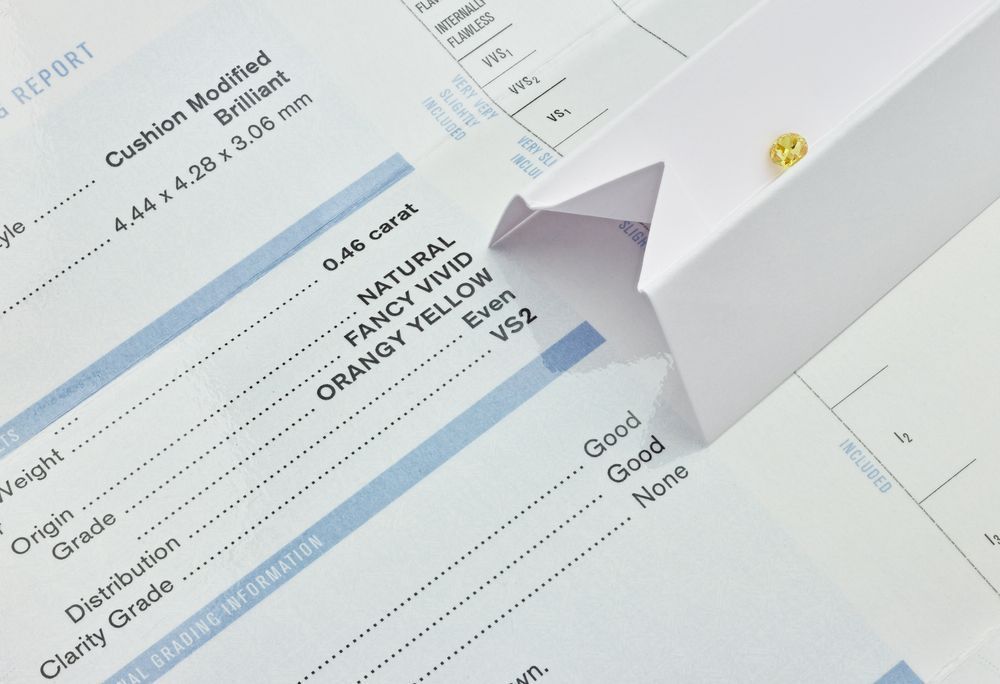
Understanding The Value Of Your GIA Certified Diamond
Accurately valuing your diamond involves several steps.
Market Research:
Stay informed about market trends to gauge the demand and pricing for similar diamonds.
Expert Consultation:
Seek professional opinions to evaluate your diamond accurately.
Comparative Analysis:
Compare your diamond with similar ones on the market to determine a competitive price.
Avoiding Common Mistakes: Pitfalls to Sidestep
Avoid these common mistakes to ensure a successful sale.
Overpricing:
Setting the price too high can deter potential buyers.
Underpricing:
Pricing too low means you might lose out on valuable profit.
Poor Buyer Selection:
Choosing the wrong buyer could lead to losing control of your diamond or not getting a fair price.
White Pine Wholesale provides free price estimates on your GIA diamond.
What to Look Out for on a GIA Diamond Report
A GIA (Gemological Institute of America) diamond report is a critical document for buyers and sellers of diamonds. It offers an unbiased, expert assessment of a diamond's quality and characteristics, which affect value. Here's what to look for on a GIA diamond report:
1. GIA Report Number
Each report has a unique identification number that can be used to verify the report's authenticity on the GIA website.
2. The 4 Cs
- Cut: The cut grade assesses how well a diamond's facets interact with light. Ranging from Excellent to Poor, the cut grade is vital to a diamond's appearance.
- Color: GIA's color scale ranges from D (colorless) to Z (noticeable color). The closer to D, the more valuable the diamond is considered.
- Clarity: This indicates the presence of internal or external imperfections, known as inclusions and blemishes, respectively. Clarity ranges from Flawless (no inclusions or blemishes visible under 10x magnification) to Included (inclusions and blemishes visible to the naked eye).
- Carat Weight: The carat weight provides a measure of size. More significant diamonds are often more valuable, but the value is also influenced by cut, color, and clarity.
3. Shape and Cutting Style
This section describes the diamond's shape (e.g., round, oval) and cutting style (e.g., brilliant, step-cut). Shape affects value considerably, with round diamonds being the most valuable.
4. Measurements
The report will provide precise measurements of the diamond's dimensions in millimeters.
5. Additional Grading Information
- Polish and Symmetry: Polish refers to the overall surface condition, while symmetry relates to the alignment of the facets. Both are graded from Excellent to Poor.
- Fluorescence: Some diamonds emit a visible glow under ultraviolet light, known as fluorescence. This can affect the appearance and, in some cases, the value of the diamond.
6. Comments Section
Here, you may find additional information, such as unique identifying characteristics or details about treatments applied to the diamond.
7. Graphics
Many GIA reports include a graphical representation of the diamond, showing the locations of significant inclusions and blemishes, which can aid in visualizing the diamond's appearance.
How Much Does A GIA Certificate Cost?
When selling a diamond and would like to obtain a GIA certificate, it’s essential to understand the associated costs of obtaining a GIA certificate. The Gemological Institute of America (GIA) charges fees based on the weight of the diamond and the type of grading report requested. As of 2024, the cost for a standard GIA Diamond Grading Report ranges from $100 to $300 for diamonds weighing up to 4.99 carats. For larger diamonds, the fees increase proportionately. Additionally, specialized reports, such as those for colored diamonds, may incur higher costs. It’s important to factor these expenses into your overall selling strategy, as a GIA certificate can enhance the diamond’s marketability and value by providing buyers with trusted and precise information about its quality and characteristics.
Wrapping Up
Selling a GIA-certified diamond can be straightforward if you understand its qualities and do some market research. A GIA certificate boosts your diamond’s value and trustworthiness, making it easier to sell. Whether you sell online or through traditional routes, presenting your diamond well and pricing it correctly is critical. Avoid common mistakes like overpricing or choosing the wrong buyer. Remember, selling a diamond is more than just a transaction; it’s a process that can be rewarding when done right. White Pine Wholesale is here to help with expert advice and competitive offers, making your selling experience smooth and successful.
FAQs: Answering Common Queries
Q: Why is GIA certification essential?
A: GIA certification is essential because it enhances trust, ensures quality, and boosts resale value. Buyers are more likely to purchase a diamond with a GIA certificate, knowing it has been evaluated by one of the most reputable gemological organizations. This certification verifies the diamond’s authenticity and accurately assesses its quality based on globally recognized standards.
Q: Can I sell my GIA diamond online?
A: Certainly! Many reputable platforms, including White Pine Wholesale, specialize in purchasing GIA diamonds. Selling online offers convenience and access to a vast audience, increasing the chances of finding a buyer who appreciates the value of your certified diamond. Ensure you choose a trustworthy platform to secure a smooth transaction.
Q: How do I know what the GIA diamond could sell for?
A: Determining the selling price of a GIA diamond involves a combination of professional valuation, market research, and understanding your diamond’s unique attributes. Professional valuation provides an expert’s perspective on the diamond’s worth, while market research helps you understand current trends and prices for similar diamonds. Recognizing your diamond’s specific qualities, such as exceptional cut or rare color, further refines its value.
Q: What are common mistakes in understanding how much you can sell for?
A: Common mistakes include lack of research, emotional attachment leading to overpricing, or a hurried sale leading to underpricing. Without thorough research, you might misjudge the market value of your diamond. Emotional attachment can result in setting unrealistic prices, deterring potential buyers. Conversely, rushing to sell can lead to accepting offers that undervalue your diamond.
Q: How do I build trust with potential buyers?
A: Building trust with potential buyers involves being transparent, providing all necessary documents, and being responsive and professional. Transparency means openly sharing information about your diamond and its certification. Providing documents such as the GIA report and purchase receipts adds credibility. Being responsive to inquiries and maintaining a professional demeanor throughout the transaction further builds confidence.
Q: Can I sell a GIA-certified diamond ring?
A: Yes, you can sell a GIA-certified diamond ring. White Pine and other serious buyers will make an offer on GIA diamonds set in jewelry, often valuing the piece for more than just its basic materials. The certification enhances the ring’s overall appeal, making it easier to find interested buyers who appreciate the quality and assurance that a GIA certification provides.









